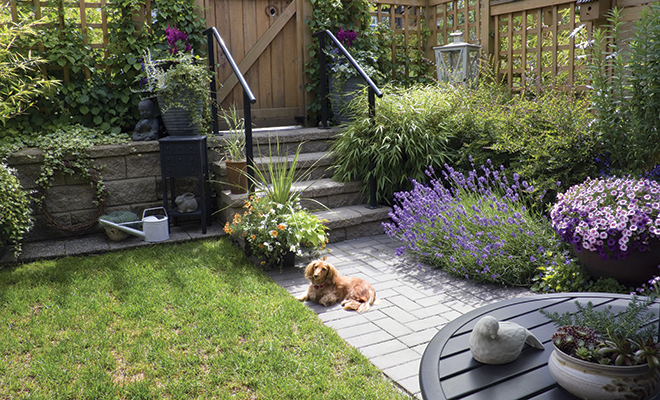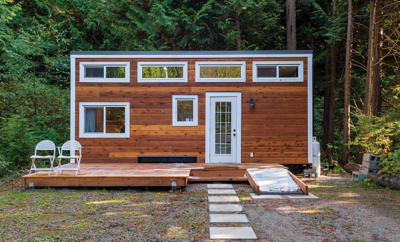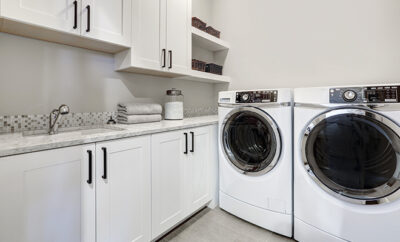
The Garden as Gallery
Decorative art doesn’t have to be restricted to your home’s interior. The term “yard art” refers to any human-created object that adds design interest to a yard or garden. Many homeowners turn their outdoor space into a personal canvas with outdoor ornamentation. Whether you buy it, collect it or create it yourself, yard art lets you make a unique statement that sets your home apart.
Yard art has a long history in the American landscape, dating back to wrought-iron decorations that were mass produced for wealthier homeowners after the Civil War. In the decades that followed, copies of classical urns and statues for the yard became a popular way to show status and culture. Today’s yard art is less pretentious and includes objects such as wishing wells and windmills that reflect America’s rural past. Other long-time favorites include wind chimes, bird houses and bird baths.
In 1957, a new trend for inexpensive and fun yard art was born when the introduction of cheap plastics led to creation of the first pink flamingo for the yard. The whimsical bird has remained a popular yard art fixture, especially for homes in tropical climates. The garden gnome, which originated in the mid-1800s in Germany, has become just as well known as the flamingo. A Victorian garden art trend that’s had a comeback is the gazing globe, which consists of a glass or stone orb on a pedestal that legend claims attracts fairies. Another throwback trend in yard art is the bottle tree, a wooden or metal post with branch-like rods holding decorative colored bottles. Blue bottles are especially popular; in folklore, evil spirits are fascinated enough to enter the bottles but not smart enough to escape.
You can add simple graphic art to your yard using a can of paint and paintbrush. Decorate a fence by stenciling on some butterflies, paint a shed with rainbow stripes or add a mural to a plain brick wall. Small signs with inspirational sayings are trending for both inside and outside the home. Three-dimensional art such as sculptures can have a big impact, especially during seasons when there are no blooming plants. Statues and mobiles with moving parts that spin when the wind blows add even more interest. Even fountains and other water features can be elevated to the level of art when you start with a special piece of pottery or glass and add a water pump.
Yard art can be made from a variety of materials. One of the most important considerations is how the material stands up to weather, making stone, metal and wood the most natural choices. Even the effects of time and the elements can add to the charm of some pieces. Yard art made of resin or plastic, on the other hand, is likely to have a shorter life due to sun and weather damage.
Whether your style is traditional, bohemian, ethereal or whimsical, DIY yard art projects can reflect your personality and provide a focal point for your outdoor space. If you’re looking for inspiration, a Pinterest search turns up hundreds of ideas for do-it-yourself projects. Many pieces incorporate recycling, with vintage dishes turned into flowers, rusty garden tools transformed into bird sculptures and old sheets of corrugated metal shaped into oversized dragonflies.
The best thing about recycled yard art is that materials are readily available at yard sales, auctions and antique and second-hand stores. Vintage yard art can be made from old bicycles, bathtubs or wheelbarrows. Some homeowners enjoy displaying antique farm implements while others might turn a collection of old gardening tools into a sculpture. You can even create yard art from a collection of interesting stones or shells. There are no limits to the creativity you can apply to a yard art project.
You can still get the handcrafted look even if you don’t have time for crafting. Craft fairs, flea markets, hardware stores and big box home stores are great sources for yard art. And there’s likely a locally owned hardware or specialty store near you with locally made treasures. Among online retailers, Etsy offers more than 80,000 items categorized as yard art. You can spend as little as $35 for a bird sculpture fashioned from a golf club or as much as $550 for a kit to build a 20-foot decorative metal windmill.
Real estate experts say that a home’s exterior can attract potential buyers before they step through the front door. While outdoor features such as patios, fire pits and outdoor kitchens can increase a home’s marketability, yard art is a more personal feature that may not have universal appeal. One person’s art may look like clutter to a potential buyer. When selling your home, you may want to remove your yard art and save it for your new yard. ■
Sources: hgtv.com, bobvila.com, bankrate.com and baltimoresun.com.







